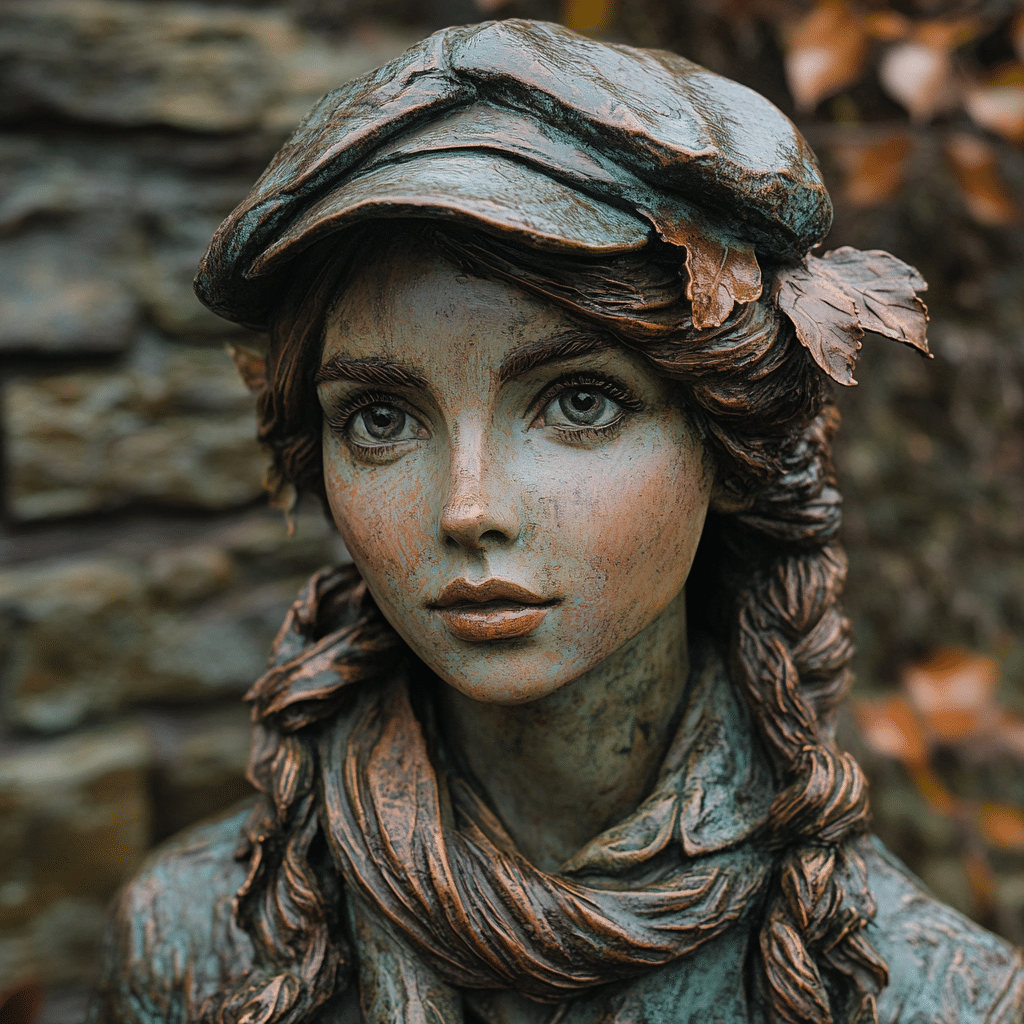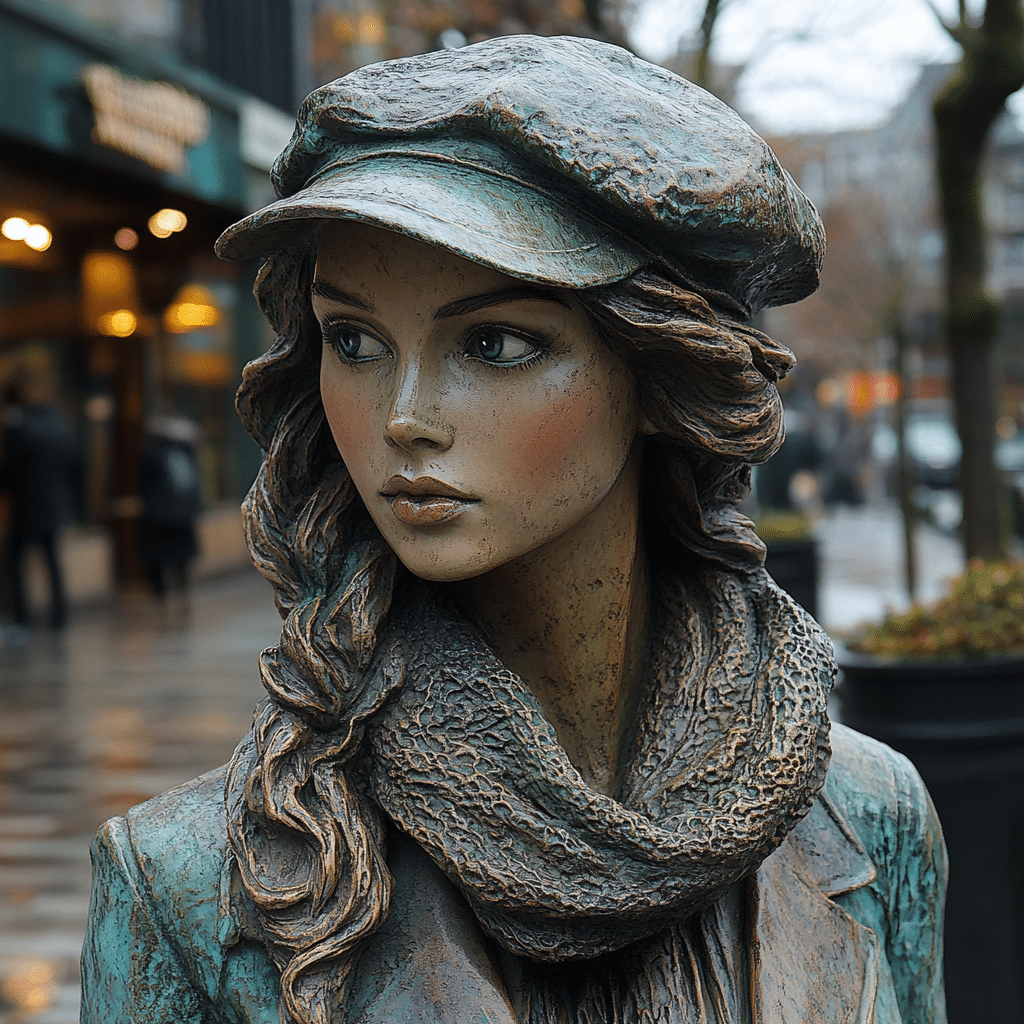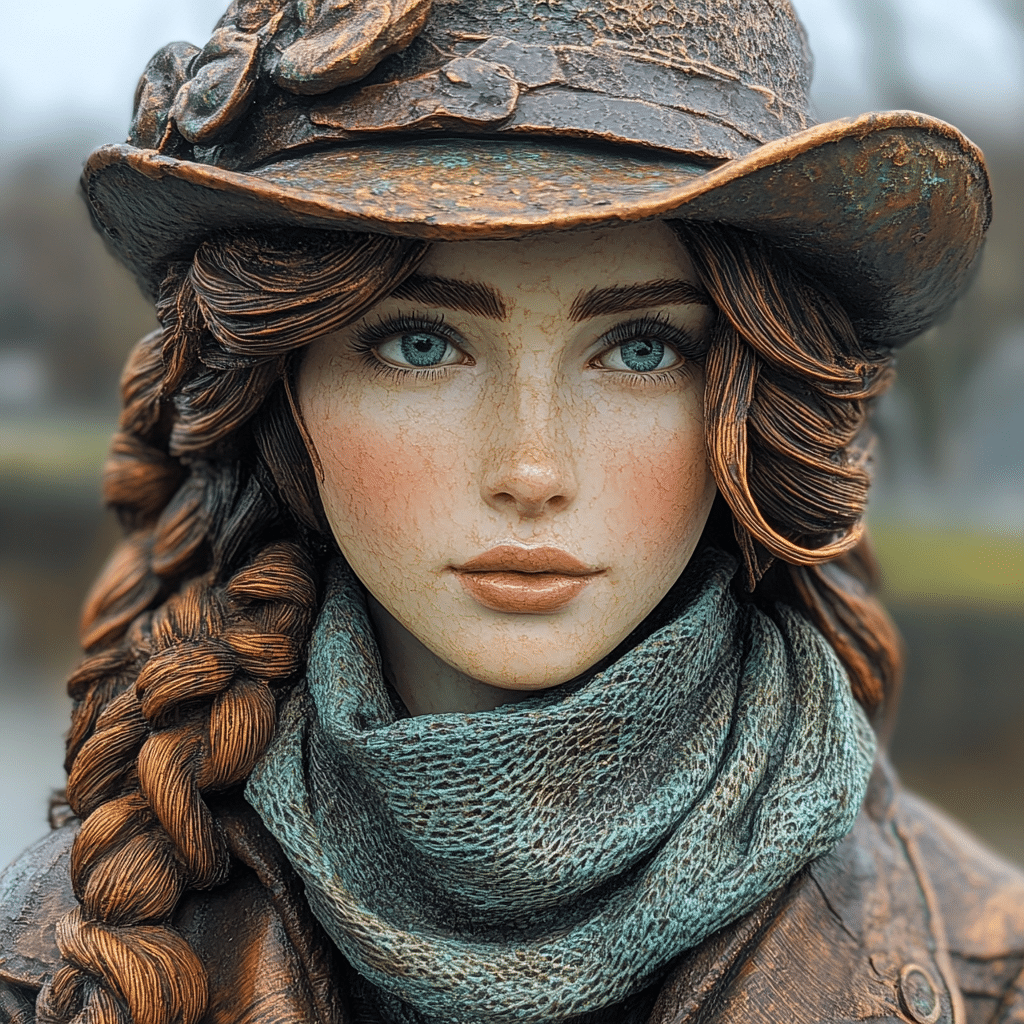The Molly Malone Statue: A Touchstone of Irish Heritage and Strength
The Molly Malone Statue in Dublin stands as more than just a bronze sculpture; it embodies the heart and soul of Irish culture, history, and resilience. Erected in 1988 by artist Jeanne Rynhart, this striking figure represents a young fishmonger cradling her cart, and it has become an enduring symbol of Dublin. The tale of Molly—often referred to with affection as ‘Moll’—is interwoven with local folklore, painting her both as a humble vendor and a resilient figure who represents the trials and tenacity of the Irish people. As you stroll through Dublin, the Molly Malone Statue captures the imagination, pulling locals and visitors alike into her enigmatic story.

The Historical Significance of the Molly Malone Statue
This iconic statue is steeped in rich narratives that resonate with the Irish experience. The legend of Molly Malone tells of a beautiful, young fishmonger who sells her wares on the bustling streets of Dublin until her untimely demise from a fever. Following her death, folklore suggests her ghost haunts the streets, becoming a metaphor for the struggles and endurance of the people. Thus, the Molly Malone Statue serves as a remembrance of life’s transience and the historical hardships that have shaped Irish society into what it is today.
The story of Molly reflects the critical roles that working-class women have played in Irish history, often overlooked in mainstream narratives. Rynhart’s impressive craftsmanship adds depth to this narrative, capturing not only the beauty of the statue but also the essence of the historical struggles faced by many.
Additionally, the statue has become an integral part of Dublin’s cultural landscape. In 2014, the statue was relocated to Suffolk Street to accommodate city developments, showcasing its importance as a landmark amidst modern growth.
Five Ways the Molly Malone Statue Embodies Irish Legends
The Molly Malone Statue poignantly illustrates the blend of myth and reality central to Irish identity. Her portrayal as a tool of strength and survival for the working class motivates local pride while drawing visitors eager to connect with that rich heritage. Her story goes beyond romanticism, encapsulating themes of love, loss, and resilience, which resonate deeply with generational struggles for identity in the face of adversity.
Crafted with precision, the Molly Malone Statue is a testament to Irish artistry. Rynhart’s work evokes emotion through its detailed features and life-like qualities. When you stand in front of the statue, you can almost feel the weight of Molly’s cart, symbolizing the burden carried by countless individuals throughout Ireland’s tumultuous history. This piece of art holds its own among esteemed works, such as ‘The Thinker’ by Auguste Rodin, illustrating the passion and dedication of artists who memorialize social realities through their craft.
The Molly Malone Statue, much like other iconic sites in Dublin such as the Ha’penny Bridge and Trinity College, attracts millions of visitors annually. Tourists flock to the statue to take pictures, learn about Molly’s story, and immerse themselves in Dublin’s vibrant culture, making it a crucial part of the city’s tourism economy. The increased footfall surrounding the statue boosts local businesses, further solidifying its place as an economic powerhouse for the community.
The Molly Malone Statue serves as more than just a commemorative piece; it acts as a communal hub where gatherings and events take place. Celebrations such as the Dublin Pride Parade reveal its role in fostering social interactions, drawing communities together in solidarity, and showcasing the diverse facets of modern activism. Just like the Spire of Dublin, this statue enhances social cohesion by elevating community engagements.
Molly Malone’s presence extends into the cultural fabric of Ireland through poems, plays, and her titular song, “Molly Malone.” This lively tune has become an anthem for Dubliners, evoking nostalgia and regional pride. The narrative woven into the lyrics challenges listeners to reflect on the shared history of the city, akin to other enduring folk songs like “The Wild Rover.” This interconnectedness keeps Molly’s spirit alive, ensuring her ongoing relevance in Dublin’s cultural consciousness.

The Contemporary Relevance of the Molly Malone Statue
In 2024, the relevance of the Molly Malone Statue remains strong in discussions surrounding Irish identity and resilience. Political and social movements frequently reference figures like Molly when advocating for women’s rights and representation in all areas, resonating with her timeless spirit of battling social injustices. The rich tapestry of historical narratives surrounding her persona serves as a potential rallying cry in contemporary societal conversations.
Moreover, the ongoing dialogues regarding public monuments and their meanings serve to reinvigorate discussions around the Molly Malone Statue. As society contemplates representation and collective memory, this statue stands as a symbol that both honors the past and compels us to consider our values as we move forward together.
Embracing the Legacy of Molly Malone
The legacy of the Molly Malone Statue transcends mere nostalgia; it stands as a powerful emblem of resilience and the continued evolution of Irish culture. As Dublin progresses through modern challenges, the statue remains a beacon, inviting introspection on the individual narratives that contribute to the broader identity of Ireland.
In this ever-changing social landscape, figures like Molly remind us of the importance of acknowledging the struggles of the past while championing progress for future generations. Amid the bustling streets of Dublin, Molly Malone’s enduring spirit reminds us that legends not only shape our understanding of history but continue to influence society today.
Molly Malone Statue: A Symbol of Irish Legend and Resilience
The Legend of Molly Malone
Did you know the famous Molly Malone statue isn’t just a pretty face? The tale of Molly Malone is steeped in Irish folklore, depicting a fishmonger who met a tragic end. Legend has it that she was a vibrant woman who sold cockles and mussels on the streets of Dublin, capturing the hearts of many with her beauty and courage. Interestingly, the statue itself has become a tourist magnet, much like the stunning views from Big Sur Hotels that attract travelers looking for a gorgeous getaway. Travelers often rub the statue’s breast for good luck, creating a natural rite of passage for visitors to Dublin.
Cultural Impact and Artistic Value
Now here’s something you might find intriguing. The Molly Malone statue is also a monumental piece of public art that showcases the talent of sculptor Jeanne Rynhart. Installed in 1988, it’s a striking bronze figure that stands at a height of 5 feet 8 inches! When you stroll by, think about how much she represents resilience and the spirit of Dublin. Art lovers might appreciate what the creation of this statue parallels; just like how Esmeralda Amada Gosling brought charm into Hollywood, Molly Malone brings life into Dublin’s streets.
Trivia and Fun Facts
And did you know Molly also has ties to global celebrations? Every June, Dublin hosts the Molly Malone Festival, honoring her legacy through music and dance. It’s a celebration that draws both locals and tourists alike, a bit like the festive vibes you get at events in Los Cristianos, where the sun and fun never seem to end! Speaking of festivities, it’s fascinating how stories evolve; the lore around Molly has spurred countless interpretations in films, poetry, and even songs. As the ongoing rivalry between teams like the Mets vs Padres brings people together, so does Molly’s story inspire camaraderie among those sharing in her mythos.
So, as you explore the beauty of Dublin, make it a point to stop by the Molly Malone statue and soak in the history and charm that surrounds this iconic work of art. There’s always more to discover, whether you’re sifting through legends or planning a visit to places like Micanopy Florida, where hidden gems await those who take the time to look.

Why do people rub Molly Malone statue?
People rub the Molly Malone statue because it’s believed to bring good luck, though some, like Ms Cripwell, argue this idea is rooted in misogyny.
What is the meaning of the Molly Malone statue?
The Molly Malone statue stands as a symbol of working-class struggle in Dublin and represents the legend of a young fishmonger who faced hardship and loss.
What happened to Molly Malone’s statue?
In July 2014, the Molly Malone statue was moved to Suffolk Street in front of the Tourist Information Office to allow for construction related to the Luas tram system.
What is the story behind Molly Malone?
The story of Molly Malone tells of a beautiful fishmonger in Dublin who died suddenly of a fever, with her ghost later said to haunt the city’s streets.
Is it lucky to touch Molly Malone?
While many folks think it brings good luck to touch Molly Malone, it’s more of a fun tradition than anything with real significance.
Why was the Molly Malone statue vandalised?
The Molly Malone statue was vandalised in various incidents, reflecting both a desire to express discontent and the challenges of public art.
What is the nickname for the Molly Malone statue?
The statue is often affectionately nicknamed “The Tart with the Cart,” highlighting Molly’s role as a street vendor while playing on her legendary charm.
What is the story of Mary Malone?
Mary Malone is another name linked to Molly, but the most popular story focuses on Molly’s status as a fishmonger in Dublin’s history and folklore.
What is the name of the peeing statue?
The peeing statue you might be thinking of is the “Manneken Pis,” a famous fountain in Brussels, Belgium.
What does “alive alive oh” mean?
“Alive alive oh” is part of a traditional Irish song associated with Molly Malone, celebrating her spirit and the vibrant life of Dublin.
What happened to Molly after she left?
After her death, the legend suggests Molly’s spirit started haunting the streets of Dublin, symbolising the enduring nature of her story.
What job did Molly Malone have?
Molly Malone worked as a fishmonger, peddling her goods on the bustling streets of Dublin, which is central to her legacy.
Was Molly Malone a lady of the night?
There’s no solid evidence that Molly Malone was a lady of the night; her story primarily highlights her life as a fishmonger.
What is the Molly Malone statue made of?
The Molly Malone statue is made of limestone, giving it a distinctive look that’s become iconic in Dublin.
What did Molly Malone sell on the streets?
Molly Malone sold fish on the streets of Dublin, often depicted with a cart full of the day’s catch, embodying the hard-working spirit of the city.



